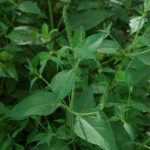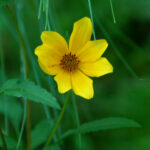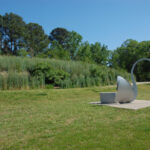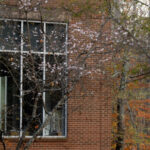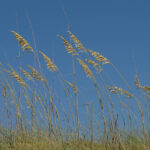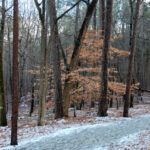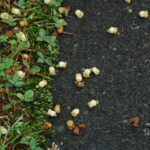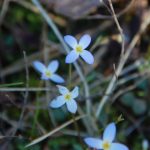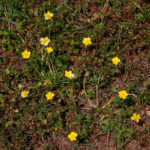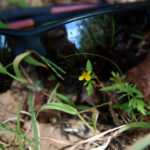Did you know that there are TWO different ragweed plants? I found a giant ragweed plant (Ambrosia trifida var. trifida) this year. It happened to be growing right next to common or annual ragweed (Ambrosia artemisiifolia). Giant ragweed can grow up to 12 feet tall. The oval leaves are 3-12 inches long. And in case… Continue reading A Second Species of Ragweed
Category: Plants
A Smile for Your Monday
I spotted my first ditch-daisy (midwestern tickseed-sunflower) of the season today. They always make me smile. Happy Monday!
A Springtime Walk in Carpenter Park
I took a walk around Carpenter Park in Cary this week. It didn’t seem like much was happening. There were a few turtles and a duck in the pond. There were a some eastern redbuds blooming at the front of the park, and some large white hydrangeas in full bloom in the back corner. Otherwise,… Continue reading A Springtime Walk in Carpenter Park
A Taste of Spring in the Middle of November
We attended an event in Forsyth county last weekend, and had an opportunity to take a walk. We were both stunned when we came across this cherry tree, blossoming in mid-November! It turns out, there are some cultivars of cherry trees that blossom twice per year – once in the spring and again in the… Continue reading A Taste of Spring in the Middle of November
A Trip to the Coast
Everywhere we go, we can’t help but be curious about the nature that surrounds us. We recently spent a few days at the beach here in North Carolina. While the star of the show was the Atlantic Ocean, we did take note of the plants and animals that crossed our path. Sea oats are a… Continue reading A Trip to the Coast
American Beech Trees Provide Winter Beauty
Did you know that American Beech (Fagus grandifolia) trees hang on to their golden brown leaves in the winter? It is thought that the leaves protect the new bud growth from hungry deer.
American Persimmon
Have you noticed piles of small white flowers on the ground? These are American Persimmon (Diospyros virginiana) flowers. Persimmon trees are dioecious, which means they have separate male and female trees. If you want to have persimmon fruit, you need to have both kinds of trees. You can tell the difference between the trees in… Continue reading American Persimmon
Bluets!
Walking in the winter is very quiet. I often spend my walks admiring the bare trees against the bright blue sky, or watching the birds that spend their winters in North Carolina. I’m always looking for flowers, though. Waiting for those first signs of spring. Today I found the first bluets of the season! Bluets… Continue reading Bluets!
Buttercups with White Petals
I came across this patch of buttercups at the North Carolina Museum of Art today. Some of the flowers have white petals, or white patches on the petals. I’m not sure what caused this. It could be age, disease, or just the environment. Have you ever seen a buttercup like this? Here’s a closer look:
Can You Identify This Flower?
Can you identify this tiny flower? I stumbled upon this little plant on the side of the trail. After taking a closer look, I figured out what it is. I’ll give you some hints: it is very common, and it is usually much bigger. It blooms during this time of year. I’ll leave the mystery… Continue reading Can You Identify This Flower?
